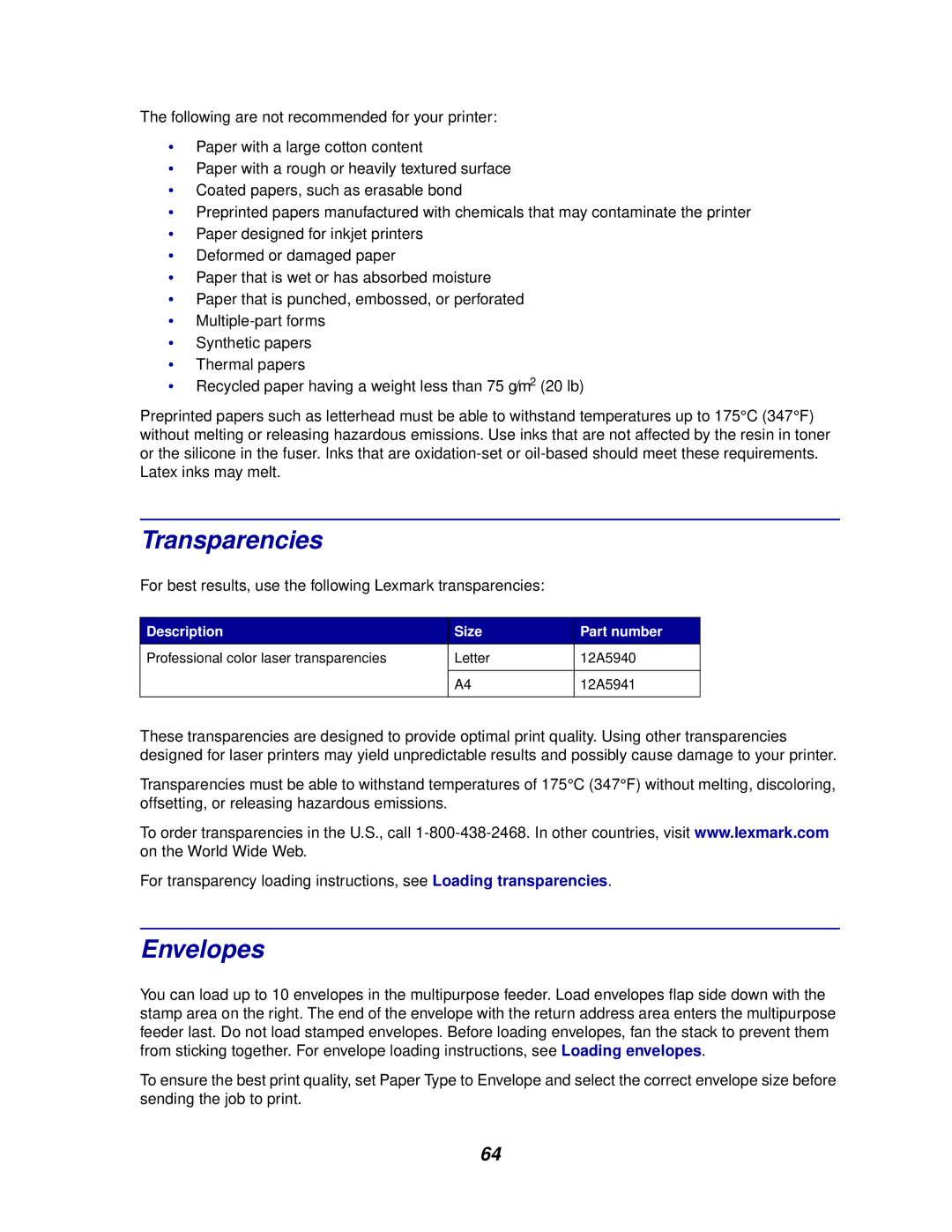
The following are not recommended for your printer:
•Paper with a large cotton content
•Paper with a rough or heavily textured surface
•Coated papers, such as erasable bond
•Preprinted papers manufactured with chemicals that may contaminate the printer
•Paper designed for inkjet printers
•Deformed or damaged paper
•Paper that is wet or has absorbed moisture
•Paper that is punched, embossed, or perforated
•
•Synthetic papers
•Thermal papers
•Recycled paper having a weight less than 75 g/m2 (20 lb)
Preprinted papers such as letterhead must be able to withstand temperatures up to 175°C (347°F) without melting or releasing hazardous emissions. Use inks that are not affected by the resin in toner or the silicone in the fuser. Inks that are
Transparencies
For best results, use the following Lexmark transparencies:
Description | Size | Part number |
Professional color laser transparencies | Letter | 12A5940 |
|
|
|
| A4 | 12A5941 |
|
|
|
These transparencies are designed to provide optimal print quality. Using other transparencies designed for laser printers may yield unpredictable results and possibly cause damage to your printer.
Transparencies must be able to withstand temperatures of 175°C (347°F) without melting, discoloring, offsetting, or releasing hazardous emissions.
To order transparencies in the U.S., call
For transparency loading instructions, see Loading transparencies.
Envelopes
You can load up to 10 envelopes in the multipurpose feeder. Load envelopes flap side down with the stamp area on the right. The end of the envelope with the return address area enters the multipurpose feeder last. Do not load stamped envelopes. Before loading envelopes, fan the stack to prevent them from sticking together. For envelope loading instructions, see Loading envelopes.
To ensure the best print quality, set Paper Type to Envelope and select the correct envelope size before sending the job to print.
64
